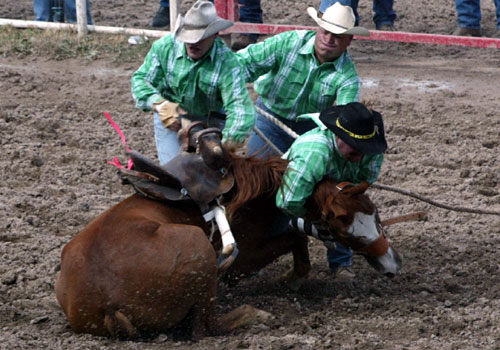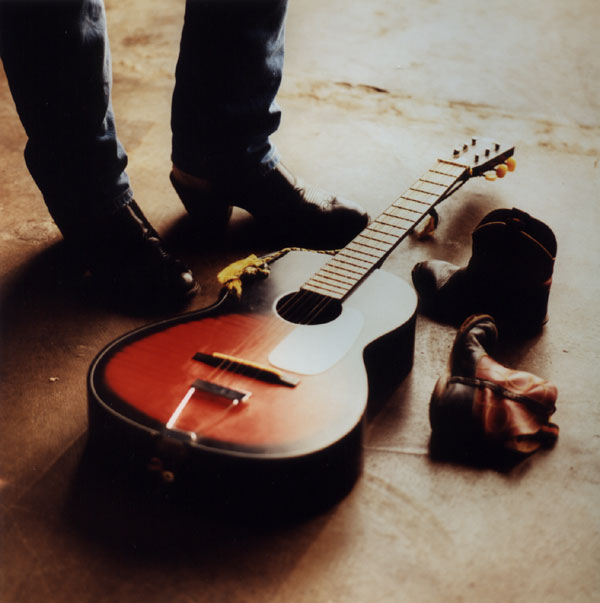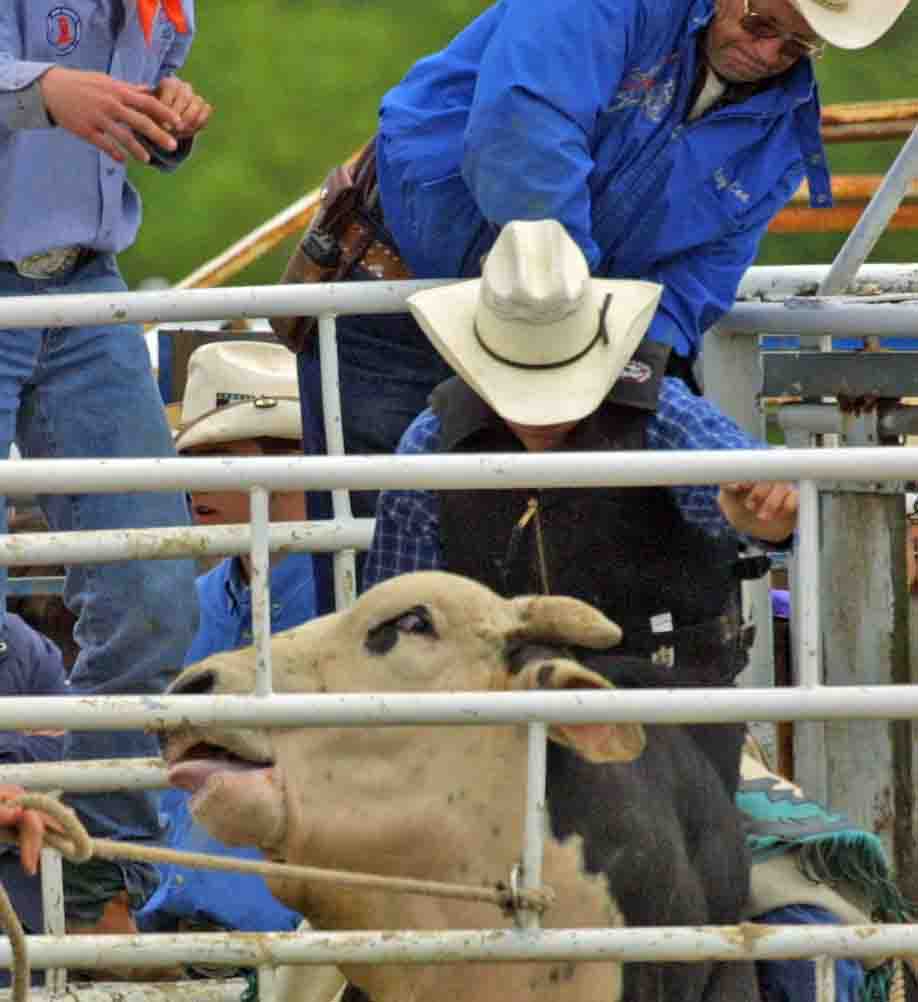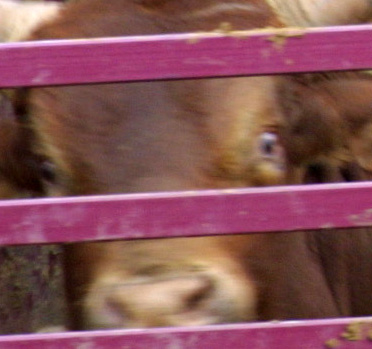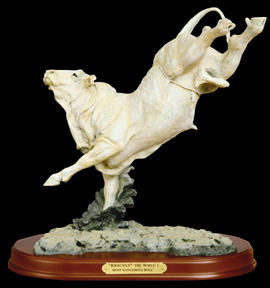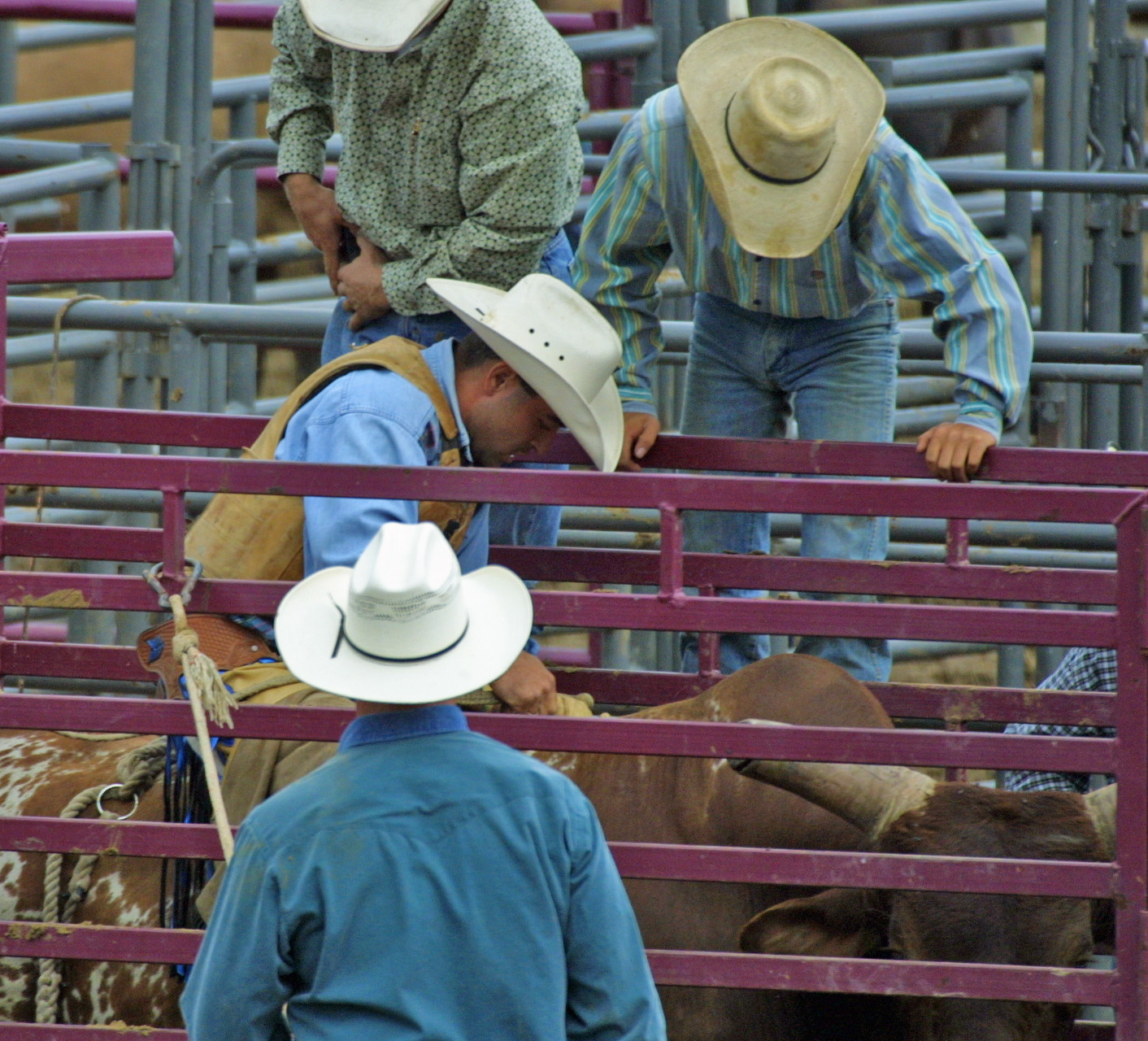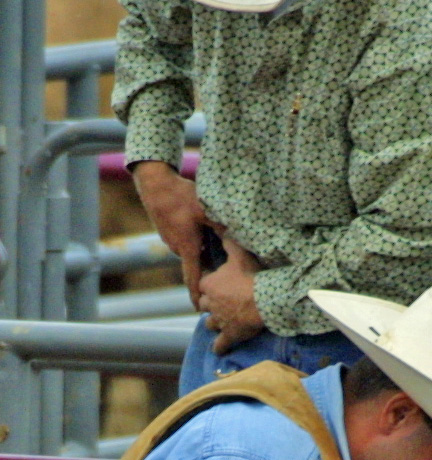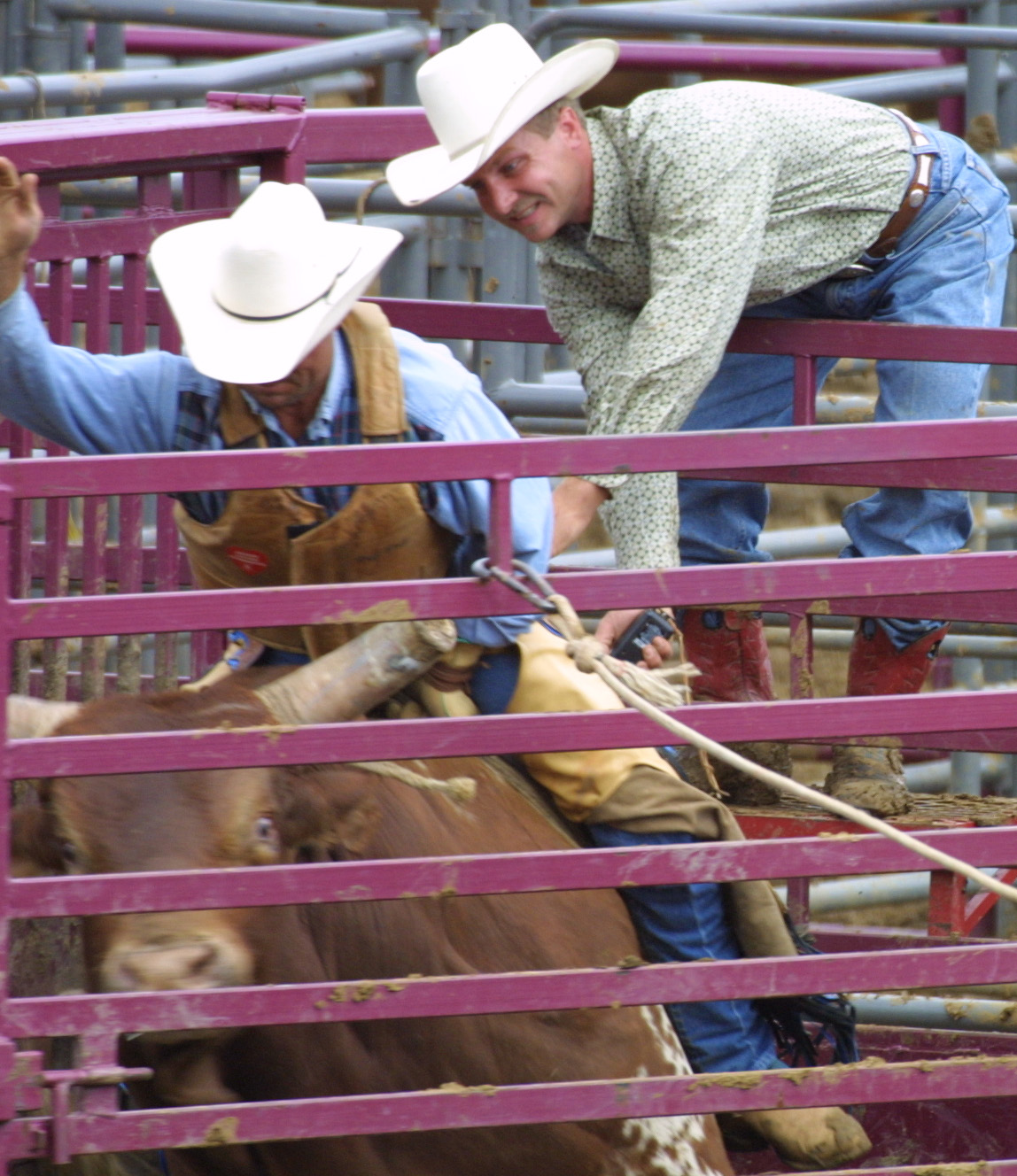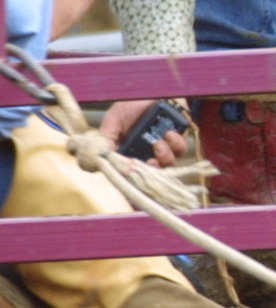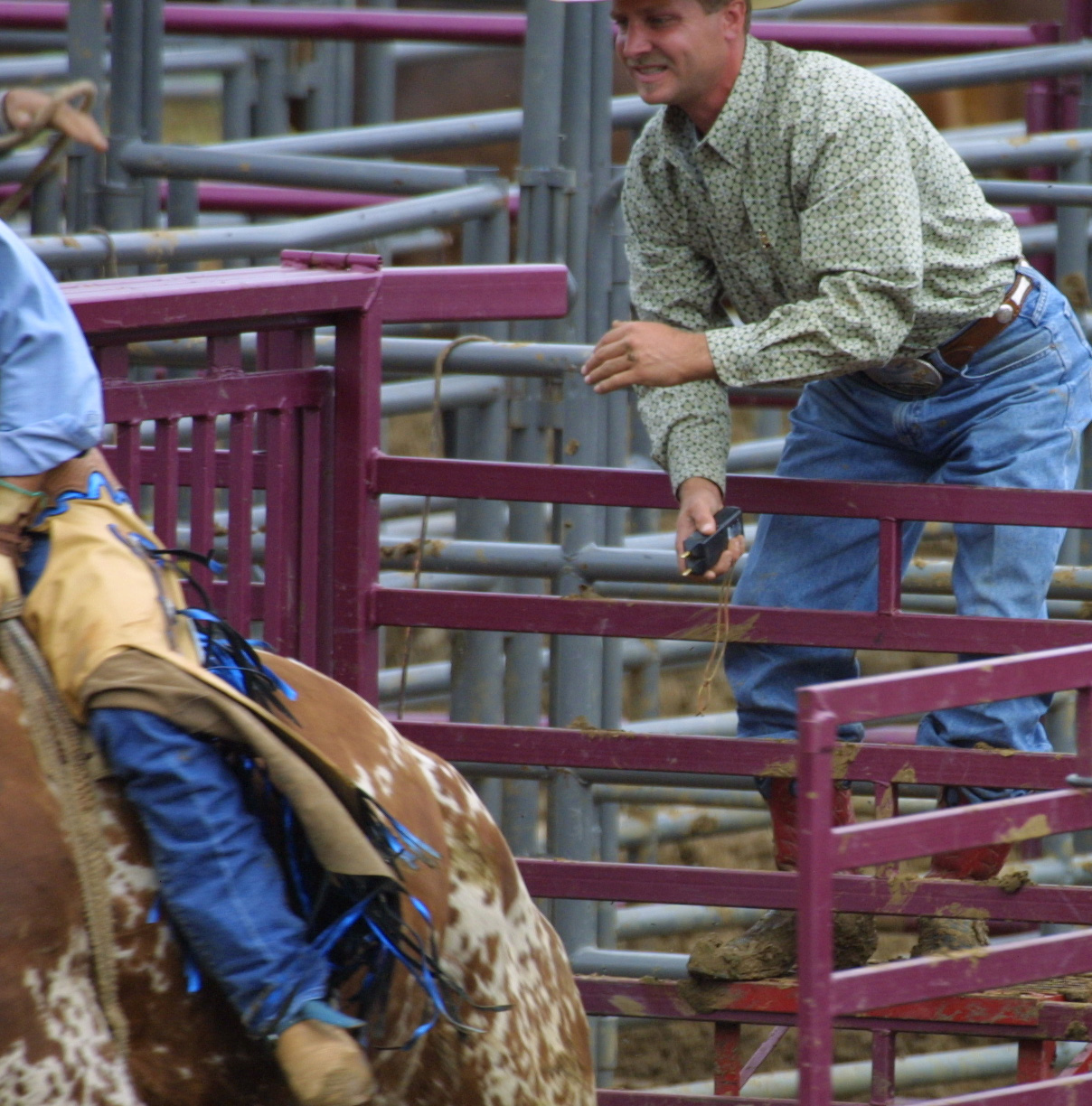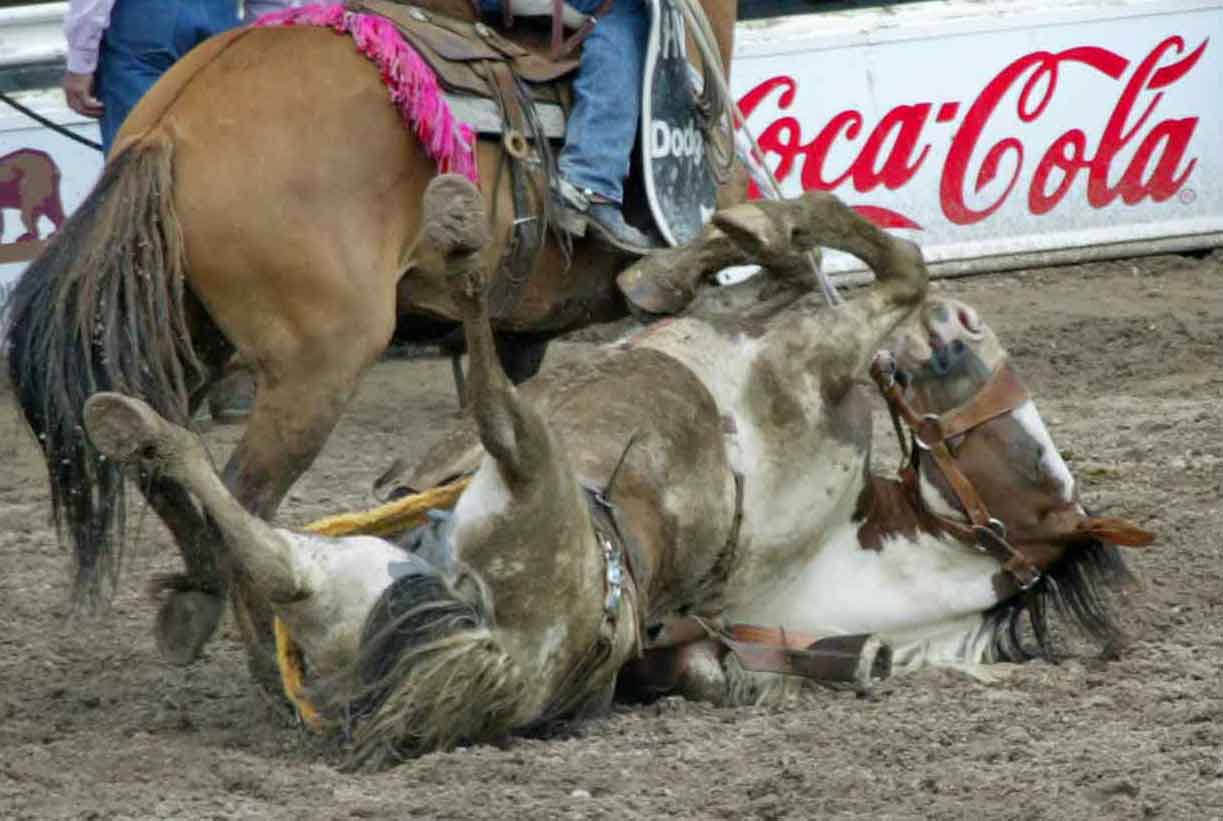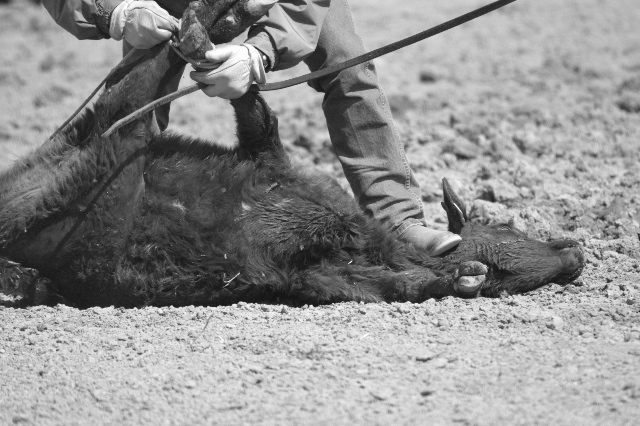In the fifteen years that SHARK has investigated and exposed the cruelty of the rodeo mafia, we can’t begin to count all the times we had to sit quietly in the stands and endure blustering and blathering rodeo announcers go on about how popular rodeos are. To listen to these professional liars, rodeos are “what’s happening” “the next breakout sport,” and blah, blah, blah. It’s all so juvenile, and shows their insecurity. Rodeo fanatics have been claiming that their cruel and idiotic spectacle is the “next breakout sport” for as long as rodeos have been around.
Lazy/sellout reporters devoid of journalistic integrity have done their best to perpetuate the myth by parroting the rodeo mafia’s propaganda. SHARK’s MediaVillains.com website has a few examples of the kind of media phonies that partner with the rodeo mafia. The goofiest part of these nonsensical claims is that so often when the silliness is being spewed, the rodeo stands are mostly barren. Nevertheless, the reality of the situation seems to have little effect on the morons who attend rodeos, and who apparently want so desperately to believe that they are part of something relevant, as opposed to a small, fringe group of misfits who are the butt of jokes for the rest of society – the folks who have active brain cells.
Now, however, rodeo thugs have gotten a very bitter dose of reality thrown at them from none other than the highly respected Gallup polling company. The December 11-14, 2006 poll asked Americans to identify, without prompting, their “favorite sport to watch.” The results show in painful detail just how insignificant rodeos are.
The majority of respondents of the poll, released January 19, 2007, chose the obvious legitimate sports that you would expect: football (43%), basketball (12%) and baseball (11%). Then respondents chose auto racing (4%), golf (3%), ice/figure skating (3%), soccer (2%), ice hockey (2%), boxing (2%), tennis (1%) and gymnastics (1%). Three percent of respondents chose “other” as their favorite sport, and twelve percent said they had no favorite sport. See the Gallup poll here.
So where did rodeo rank among these most popular sports? It didn’t! Imagine that – the rodeo people have been lying about their status as a supposed sport! Who woulda guessed? But wait, cause this expose’ still gets better. Gallup also broke their responses down by age, gender and geographic regions of the US, so in effect, rodeo has multiple opportunities to show strength in at least a small portion of the sports market. For instance, if we were to believe even a tiny bit of rodeo propaganda, we would find rodeos to be a significant activity in the west, right? But, no! It didn’t show up. Perhaps since rodeos are a predominantly a man’s sport, it’ll show up in the gender breakdown, right? Wrong again! How about in the age breakdown, since rodeo is for the young, right? No! How about older sports fans? Forget about it! There was no mention of rodeo.
The poll also included some historical information about the popularity of sporting events from 1994 to 2006. In four of those years rodeo managed to scrape up a one percent rating, but for 2006 rodeo noticeably declined, not even able to make it up to 0.5%. The closest activity rodeo could be compared to in popularity was volleyball – that’s right – volleyball! But at least volleyball is a real sport.
Finally, Gallup included information of the long-term trend of sports popularity, starting way back in 1937, up to 2006. Once again, rodeo was a no-show.
The real beauty of this poll is that it didn’t exclude rodeo, even though rodeo can’t be considered a legitimate sport. Rodeo had a shot to prove itself, and as usual, the rodeo mafia was proven to be lying.
Gallup's results show why rodeo is barely hanging on to its existence. Plagued by constant exposure from animal advocacy groups like SHARK, attendance is faltering and sponsors (Campbell Soup’s Pace Foods, Starbucks, and others) are pulling out, the rodeo industry's in trouble and they know it. The [now former] head of the Professional Rodeo Cowboys Association (PRCA) has admitted to being a liar, a cheat, and pled guilty to 4 felony charges, and attendance remains dismal at many rodeos and at the PRCA’s “Hall of Fame” at its Colorado Springs, Colorado headquarters.
Recently, hard-hitting journalists have shown the public the pervasive abuse and corruption at major rodeo events in Wyoming and Illinois. Finally, the International Pro Rodeo Association (IPRA), the world’s second largest rodeo association, barely escaped going out of existence recently, and was bought for a song by some former, apparently disgruntled PRCA folks. That simply means that the zombies are going to try to resuscitate the dead.
The following is an excerpt from the article posted on RodeoAttitude.com, a pro-rodeo web site. When even the rodeo fanatics make this kind of admission, you know things are really bad:
“Recently rumors had spread throughout the rodeo industry that the IPRA, which began in 1957 in Pauls Valley, Oklahoma, was in financial trouble and on the verge of dissolving.”
But there’s even more information pointing to the problems faced by rodeo thugs, and it is to be found within the files of none other than the rodeo mafia itself, on the web site of the Reno rodeo. It’s a list of PRCA statistics from 1953 to 2004, over a half-century of information. As we said earlier, when even the rodeo people acknowledge this, it is a serious matter.
According to the PRCA’s own information, in 1953 there were 578 PRCA-sanctioned rodeos, while the number in 2004 was 671, or an increase of sixteen percent. Comparatively, the American population rose from 160,184,000 in 1953, to 293,027,571 in 2004. That’s a jump of more than 83 percent. (US Census Bureau international Database, www.census.gov) Obviously rodeos are not keeping up with the population of the US – a clear indication that rodeo popularity is dropping. In 2013, the total number of PRCA rodeos has continued to drop to about 600.
So rodeo, a fringe activity at best in the beginning, is steadily losing any place in American society, and is basically considered to be even less legitimate than professional wrestling.
Here’s the truly appalling portion of the story. Although rodeo is a joke when it comes to public interest, rodeo prize money has skyrocketed from $2,492,856 to a whopping $35,532,631, or more than a fourteen-fold increase! If we have to give kudos to one part of the rodeo mafia, it’s the marketing department – for they are hands down the best snake oil salespeople in the world! They’re selling multinational corporations a bill of goods that, were it not for the cruelty of rodeo, would be hilarious! This phenomenon is especially wacky given that some of the companies like Dodge Trucks and Ford Motor Company have enormous financial problems. Nevertheless, these struggling companies are pouring millions of dollars into the rodeo mafia even as they are laying off their workers and posting record losses.
As you can see there is both good and bad news in all of this. The good news is that this is a battle that can and must be won. The fact is that most Americans see rodeo for just what it is – a stupid activity, whose entertainment value is akin to watching Jello harden.
We are still in the process of educating people as to the inherent cruelty of rodeos, and when we have achieved more success in that area, the demise of the rodeo mafia among thinking people will be assured.
That bad news is that there are still untold numbers of rodeos animals abused, maimed, and killed every year in rodeos, and this abuse is being funded by corporate sponsors like Coca-Cola and Dodge Trucks. This demonstrates the importance that caring people NOT give these abusive and corrupt companies so much as a penny of your money. Every call you make via AT&T/Cingular/SBC is money going to the rodeo mafia. Every Coke product you purchase is money that will be used to abuse animals. Please remember that.
Hopefully the exposed lies of the rodeo mafia and your consumer voice will help persuade the corporate morons who sponsor rodeos to stop propping up this excuse for entertainment.



